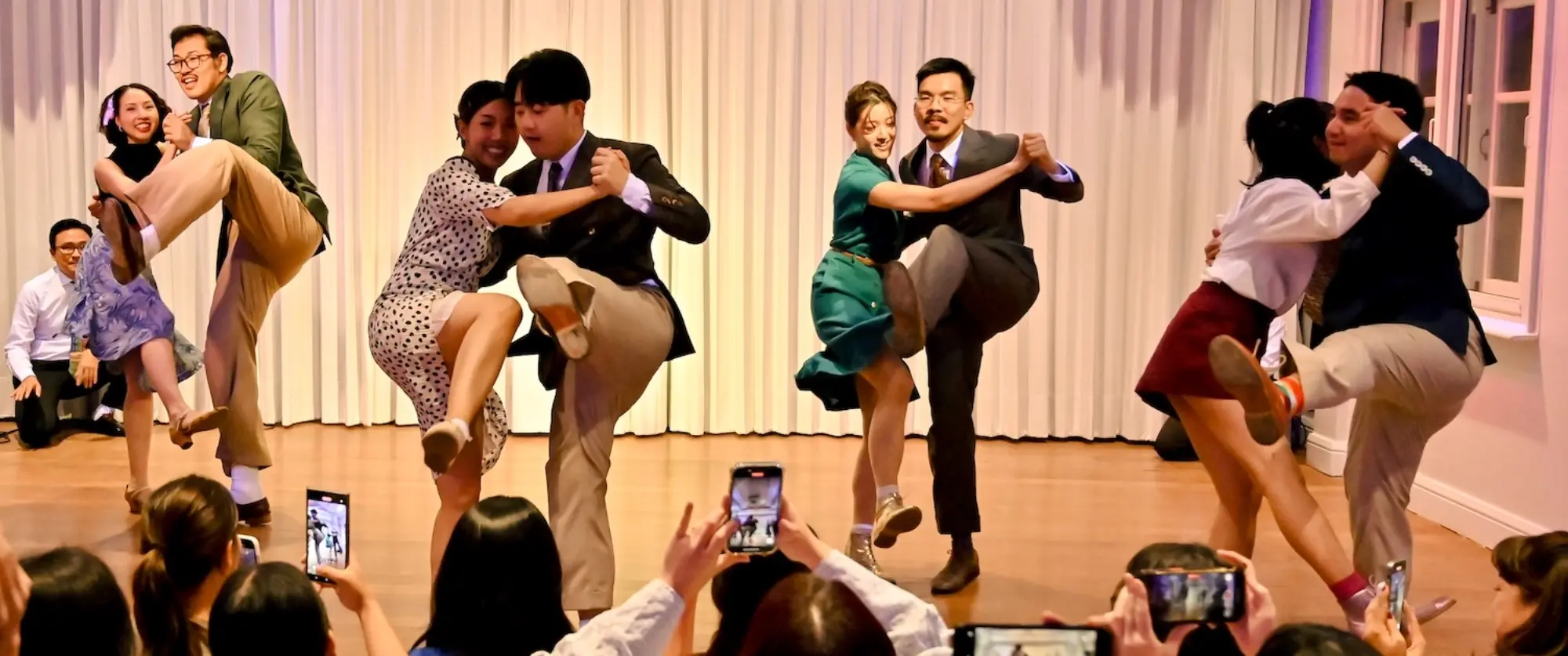So, What Exactly Is Swing Dance?
Swing dance is a partner dance that's playful, lively, and a little bit unpredictable—in the best way possible. It emerged in Harlem, New York, around 1928, born from African-American communities who turned music into motion with joy, skill, and style.
At the heart of it all is the Lindy Hop—a unique blend of jazz, tap, breakaway, and Charleston. It combines the freedom of solo improvisation with the structure of partner dancing, creating a dynamic eight-count rhythm that's as fun to watch as it is to dance.
Where the Magic Began: Harlem & the Savoy Ballroom

One place, in particular, helped swing take flight: the legendary Savoy Ballroom in Harlem. Nicknamed "the Home of Happy Feet," the Savoy wasn't just a dance hall—it was a cultural heartbeat. It stood out for welcoming everyone, regardless of skin color. What mattered most wasn't who you were, but how you moved.
This is where Lindy Hop truly found its wings. Night after night, the floor pulsed with joyful feet, live big band swing, and dancers who pushed the limits of creativity and connection.
A Dance That Belongs to Everyone
Like all good things, Lindy Hop had its ups and downs. After WWII, its popularity faded—but it never disappeared. In the 1980s, swing started swinging again, as dancers around the world rediscovered the joy and sought out the legends who'd lived it.
Frankie Manning didn't care about fame. He just wanted people to know how happy this dance could make you. In his honor, his birthday—May 26—is now celebrated as World Lindy Hop Day across the globe.
Today, swing is a worldwide celebration: in dance halls, on competition stages, and on sidewalks where someone hears a brass section and just can't help but move. Whether you're introverted or extroverted, young or old, partnered or flying solo—this dance makes space for you.
Come Find Your Rhythm
Swing dance isn't just about steps—it's about feeling. It's about music you can't resist, strangers who become friends on the dance floor, and the moment your feet take over and joy takes the lead.
So if you've ever tapped your foot to jazz or imagined gliding across the floor like it's 1939—come join us. No need to wait for a "perfect moment." Just bring your two feet and a willingness to smile.
We'll meet you on the dance floor :).
